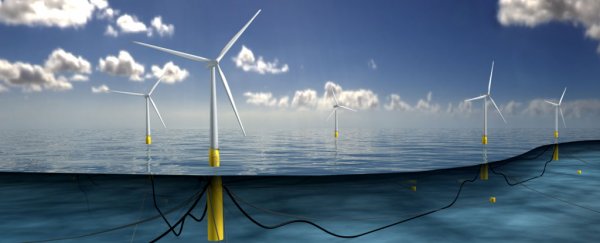The Scottish government has announced that it's approved the construction of the UK's first – and world's largest – floating offshore wind development.
The world's largest floating wind farm is set to be installed 25 kilometres off the coast of Peterhead at the easternmost point of mainland Scotland. The development, called Hywind, will be developed by Norwegian energy company Statoil and is expected to generate enough electricity to power nearly 20,000 homes.
"Hywind is a hugely exciting project, in terms of electricity generation and technology innovation, and it's a real testament to our energy sector expertise and skilled workforce that Statoil chose Scotland for the world's largest floating wind farm," said John Swinney, deputy first minister.
The pilot development will encompass five floating 6 MW turbines capable of generating 135GWh of electricity each year. Unlike land-based wind turbines, the Hywind turbines will be anchored in the seabed and will transport their generated electricity via undersea cables to the shore.
The news comes just days after the announcement of another massive offshore wind farm development in the UK, and signals an ongoing shift in how energy providers are viewing renewable energy sources now that prices for renewable energy production are competitive with power derived from fossil fuel sources.
Last month we found out that the world is on track to get more than a quarter of its power from renewables by 2020, a stunning achievement being delivered by the cost-effectiveness of clean energy generators such as wind turbines.
In the lead-up to the extremely important climate talks set to kick off in Paris this month, it's promising to see governments and corporate energy interests aligning to such a degree in terms of clean energy – even if the primary mover behind these kinds of announcements is clearly economic factors as opposed to environmental considerations.
"Floating wind represents a new, significant and increasingly competitive renewable energy source," said Irene Rummelhoff, Statoil's executive vice president for New Energy Solutions. "Statoil's objective with developing this pilot park is to demonstrate a commercial, utility-scale floating wind solution, to further increase the global market potential. We are proud to develop this unique project in Scotland, in a region that has optimal wind conditions, a strong supply chain within oil and gas and supportive public policies."
